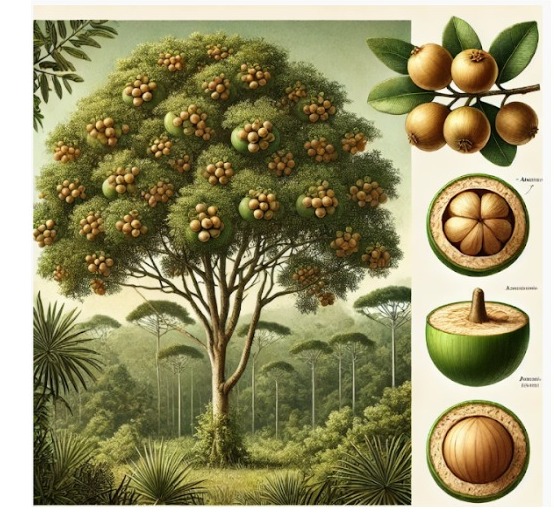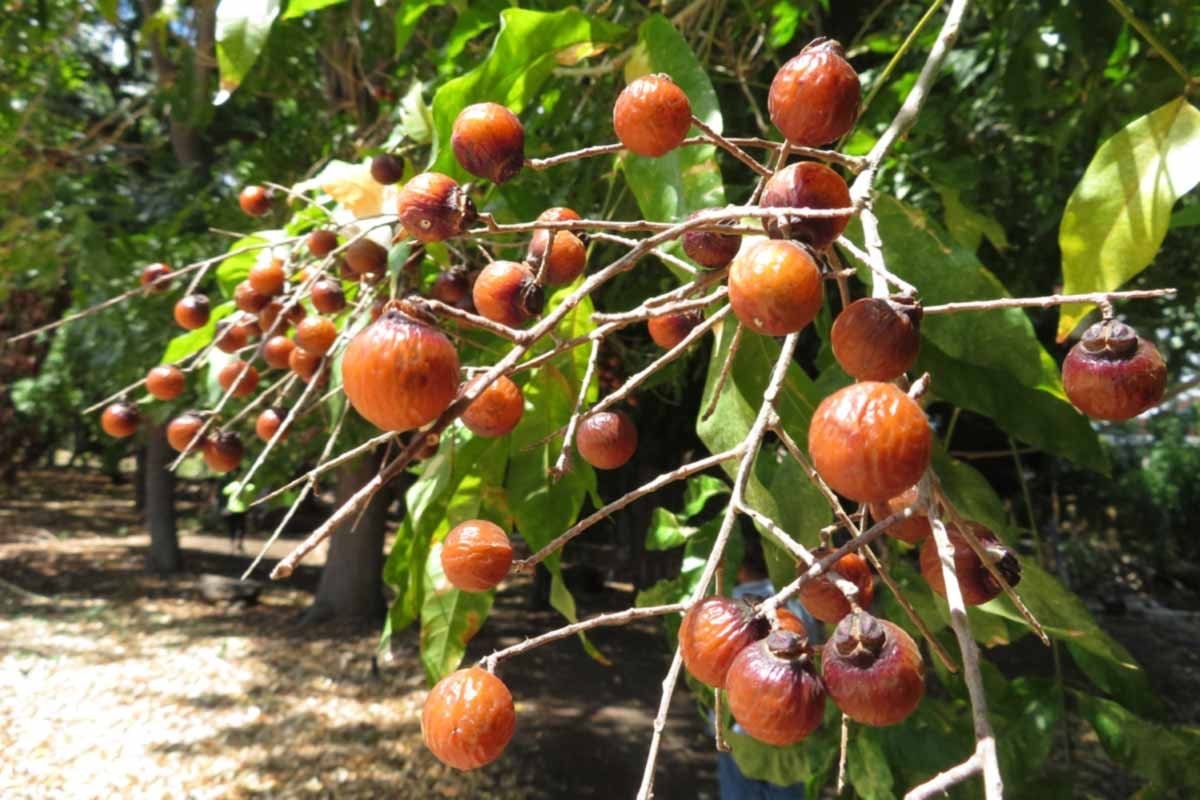Amazon Forest Plants, Forest Teacher Plants, FOREVER THE FOREST, Healing Plants
Sapindus Saponaria: The Soap Plant of the Amazon
Nature’s Gift to Sustainability
Nature is an endless source of resources that sustain life, and the Sapindus saponaria, also known as the “soap plant” or “soapberry,” is an extraordinary example of the Amazon rainforest’s generosity. This fascinating tree, native to tropical regions of the Americas, has been used for centuries by Indigenous communities and traditional populations for personal care, cleaning, and other sustainable applications.
What is Sapindus saponaria?
Sapindus saponaria is a medium-sized tree belonging to the Sapindaceae family. It grows primarily in tropical soils and can reach up to 10 meters in height. The highlight of this plant lies in its small, spherical fruits, which contain a natural substance called saponin, responsible for its foaming and cleaning properties.
When the fruit is rubbed in water, the saponin dissolves, forming a foam similar to that of commercial soaps but completely natural and free of chemicals that harm the environment.
Botanical Features
- Leaves: The tree’s pinnate leaves are a deep green, contributing to its elegant appearance.
- Flowers: Small and inconspicuous, the flowers attract various pollinators essential for the ecosystem.
- Fruits: The soapberries are small, round, and range from yellow to brown when ripe, each fruit encapsulating the magic of natural cleaning.
Traditional and Sustainable Uses
Indigenous and traditional communities of the Amazon have used Sapindus saponaria fruits for generations. These uses go beyond personal cleaning and include:
Personal Hygiene
The fruits have been used as a natural soap for washing hands, face, and body. Their gentle, hypoallergenic nature makes them ideal for sensitive skin and even for babies.
Laundry
Soapberries serve as a sustainable alternative to commercial detergents. A handful of dried fruits placed in a cloth bag can replace chemical-laden laundry products, leaving clothes clean and soft without polluting water systems.
Traditional Medicine
In ethnomedicine, Sapindus saponaria is believed to have antimicrobial and antifungal properties. Infusions made from the fruits or bark are used to treat skin problems such as eczema, rashes, and minor infections.
Environmental Protection
Being biodegradable, the use of soapberry avoids polluting rivers and lakes, respecting the harmony of the forest. This contrasts sharply with synthetic detergents that often leave harmful residues in aquatic ecosystems.
Saponin: A Natural Ally
Saponin is a natural surfactant that breaks the surface tension of water, allowing it to remove dirt and grease. Unlike synthetic detergents, the saponin in Sapindus saponaria does not irritate the skin and is hypoallergenic, making it an excellent choice for those seeking natural and less aggressive products.
Additional Properties:
- Insecticidal: Saponin has natural insect-repelling qualities, making it useful in organic agriculture and as a component in homemade pest control solutions.
- Water Softening: The saponin molecules bind with minerals in hard water, enhancing the cleaning power of the soapberry.
- Antimicrobial Action: Scientific studies have shown that saponin exhibits antibacterial and antifungal properties, which further supports its use in personal care and cleaning products.
Cultivation and Conservation
Sapindus saponaria is a plant that thrives in tropical climates, adapting well to various soil types. Its ease of cultivation makes it a viable option for sustainable agriculture and agroforestry systems. However, to ensure long-term benefits, it is vital to follow ethical and ecological practices.

Sustainable Cultivation Practices
- Agroforestry Integration: Cultivating Sapindus saponaria alongside other crops supports biodiversity and enhances soil fertility.
- Harvesting with Care: Ensuring that fruits are collected without harming the tree helps maintain its health and productivity.
- Community-Led Initiatives: Local communities can manage cultivation and harvesting, ensuring they benefit economically while preserving the forest.
Conservation Efforts
Deforestation and habitat loss pose threats to many Amazonian species, including Sapindus saponaria. Conservation programs that involve reforestation, education, and sustainable land use are crucial for protecting this valuable resource.
Benefits for Modern Life
In recent years, Sapindus saponaria has gained global recognition as a sustainable alternative to chemical-laden products. Its versatility has inspired the development of eco-friendly goods that cater to modern lifestyles.
Popular Products:
- Natural Soaps: Liquid and solid soaps made from Sapindus saponaria are gentle on the skin and environmentally friendly.
- Eco-Friendly Cleaners: Household cleaning products derived from soapberries are effective and safe for both humans and pets.
- Hair and Skincare: Shampoo bars, conditioners, and skincare items incorporate Sapindus saponaria for their cleansing and nourishing properties.
Environmental Impact:
By choosing products made from Sapindus saponaria, consumers contribute to reducing pollution, supporting biodiversity, and promoting fair-trade practices that benefit local communities.
The Global Potential of Sapindus saponaria
As the world shifts toward sustainable living, Sapindus saponaria holds immense potential to become a cornerstone of eco-conscious consumer habits. Its natural properties align perfectly with the increasing demand for products that prioritize health and environmental integrity.
Education and Awareness
- Workshops and Training: Educating farmers and local communities about the economic potential of Sapindus saponaria encourages its sustainable cultivation.
- Public Campaigns: Raising awareness about the soap plant’s benefits can inspire consumers to make environmentally friendly choices.
- Scientific Research: Investing in studies to explore additional uses and benefits of saponin can further its applications.
Challenges and Opportunities
While Sapindus saponaria offers numerous benefits, there are challenges to its widespread adoption:
Challenges:
- Market Accessibility: Limited availability in certain regions can hinder its adoption.
- Knowledge Gaps: Many people remain unaware of the plant’s potential, limiting demand and investment.
- Overharvesting Risks: Unsustainable harvesting practices could deplete natural populations and harm ecosystems.
Opportunities:
- Global Partnerships: Collaborations between NGOs, governments, and private sectors can promote sustainable practices and expand market access.
- Innovative Products: Developing new applications, such as biodegradable packaging or industrial cleaners, can open new markets.
- Eco-Tourism: Showcasing Sapindus saponaria cultivation as part of eco-tourism initiatives can generate income and raise awareness.
Sapindus saponaria, the soap plant of the Amazon, exemplifies the harmony between nature and human needs. Its natural cleaning properties, ecological benefits, and cultural significance make it a valuable resource for sustainable living. By supporting its cultivation and integrating it into modern lifestyles, we can honor Indigenous wisdom, protect the environment, and pave the way for a cleaner, greener future.
The journey of Sapindus saponaria is a testament to the Amazon’s potential to inspire solutions that benefit both people and the planet. As we embrace its gifts, we take a step closer to a world where sustainability and well-being go hand in hand.


